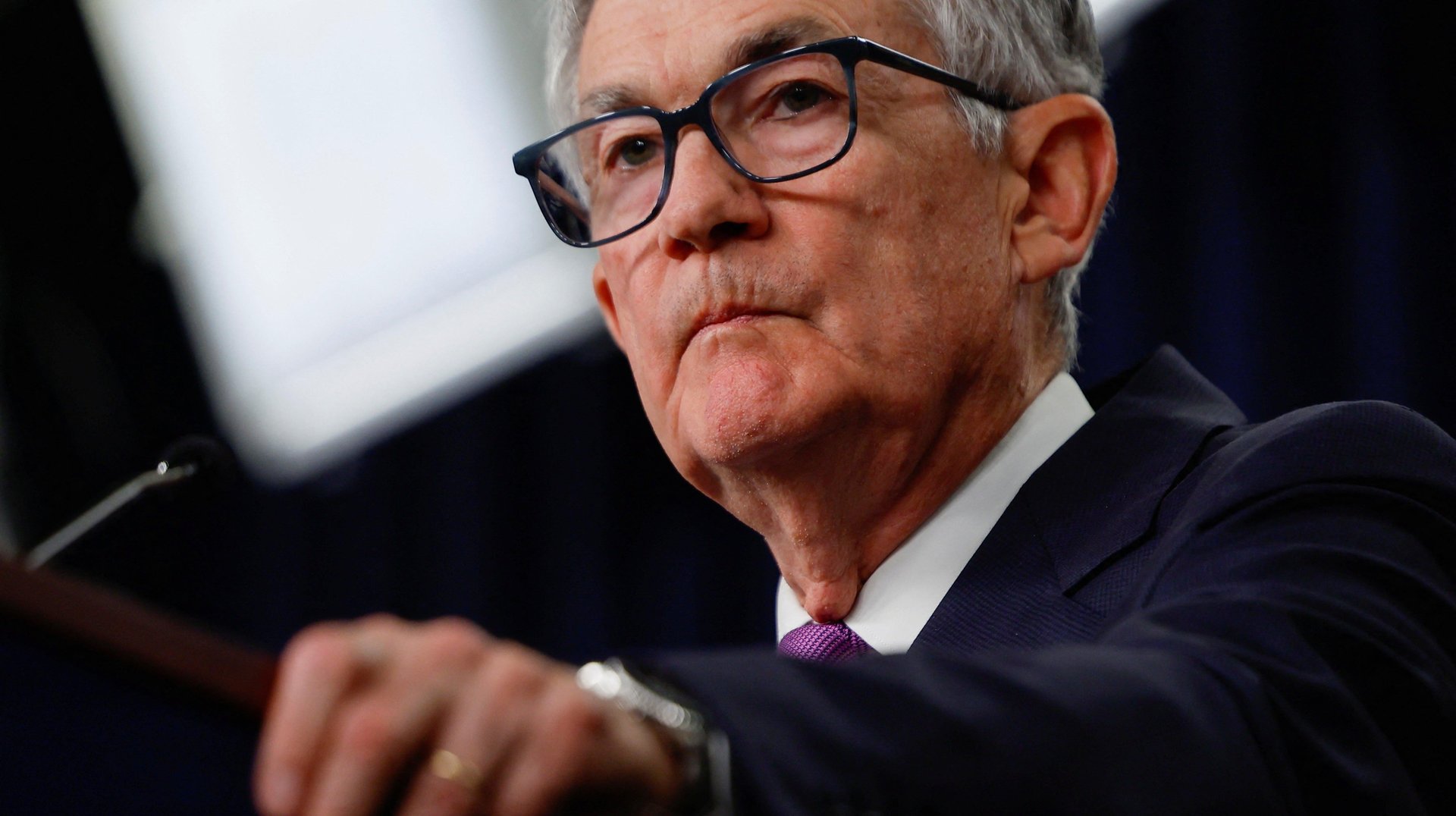The Fed projects that it will win its inflation fight by 2026
Officials at the US central bank expect rates to be higher for longer.

Officials at the US Federal Reserve predicted that the rate of average annual inflation will come down to 2% in 2026, as the central bank’s monetary policy committee left rates unchanged in September.
Suggested Reading
The officials also forecasted that they’ll cut rates at a slower pace than previously thought, as outlined in their summary of economic projections. In June, officials thought they would bring down the Fed’s benchmark interest rate from 5.6% to 4.6% in 2024. Now, officials think next year will only see a decrease of 0.5 percentage points to 5.1%. In the long run, the central bank plans to keep the rate at 2.5%.
Related Content
The Fed’s forecasts still estimate that the US will experience a soft landing—that is a return of inflation to its 2% target without a recession. Its forecast for gross domestic product (GDP) for this year rose to 2.1% and will keep growing at 1.8% each year in the long run.
The Fed may also hike rates once more before just holding interest rates at a high level for some time. The past three months have showed a cooling in inflation data, but the Fed still wants to see that “it’s more than just three months,” chair Jerome Powell said in a press conference on Wednesday (Sept. 20).
The Fed also has to factor in a potential government shutdown, higher long-term rates, an oil price shock, resumption of student loan payments, and the United Auto Workers (UAW) strike when forecasting future economic growth and inflation. While the labor market continues to be strong, the Fed has to watch how many economic risks pile up and threaten to tip the US into a recession.
“We’re coming into this with an economy that appears to have significant momentum,” Powell said. “But we do have a couple risks.”
Because of these risks, the Fed makes its forecasts based on how it thinks economic activity will play out in the coming months and years. But Fed predictions about interest rate levels are never guaranteed. Instead, the central bank has tried to remain data-dependent in a post-covid world instead of following a standard path for tightening monetary policy.
“Forecasting is very difficult,” Powell said. “Forecasters are a humble lot with much to be humble about.”
